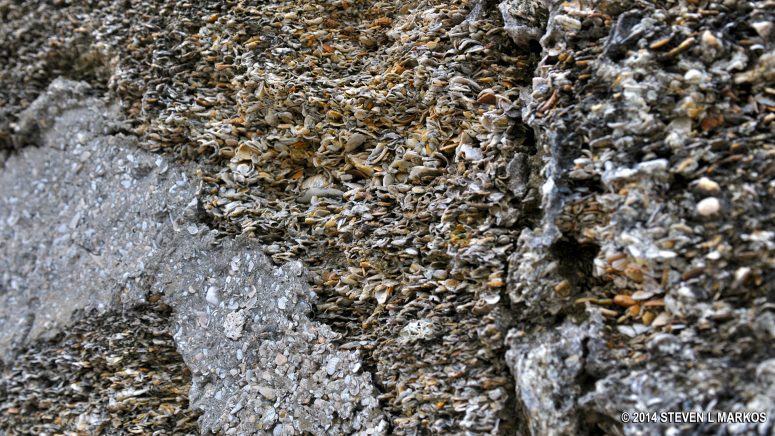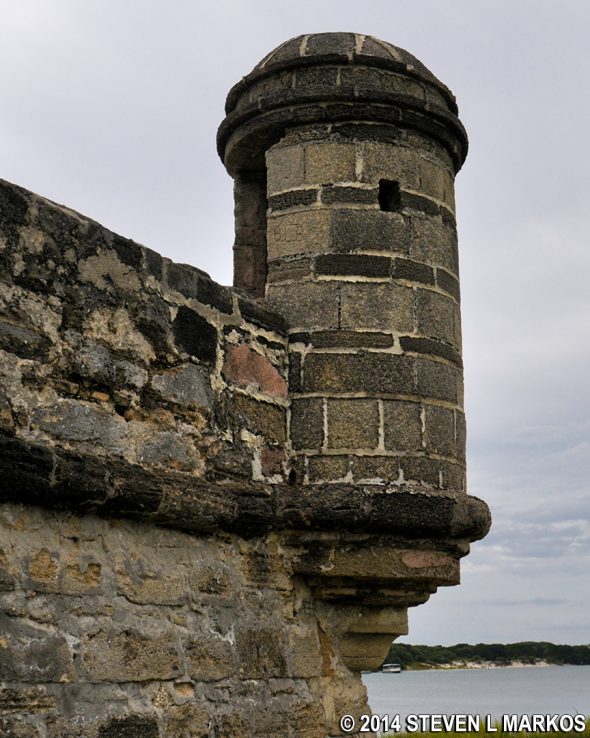Be it Gloria Swanson in Sunset Boulevavd or John Travolta in Pulp Fiction, everyone loves a comeback. Both actors had seen their better days, and starring turns in hit movies put them back on the map. If ever a man-made structure could make a comeback, it would be Fort Matanzas. Like Swanson and Travolta, the fort had seen its better days, and while it never disappeared, it had certainly “fallen off the map.” Unlike Castillo de San Marcos, which was occupied by the militaries of one country or another until it was decommissioned in the early 1900s—and then immediately turned into a tourist attraction—Matanzas was abandoned by the Spanish in the late 1700s and quietly awaited nature to return it to the shell and sand it was created from.
Had you taken a boat along the Matanzas River any time from the early 1800s until the early 1900s, you would have passed a dilapidated structure not much bigger than a typical single-family home. Without its guns, it might be mistaken for some sort of watchtower or low-rent castle built by an eccentric from an earlier century. Out of curiosity you might have pulled your vessel up along the shore to inspect the ruins. The more daring may have tried to climb onto the structure, though without any stairs it would have been difficult to scale the fifty-foot walls, which, depending on the year of your visit, could have been cracked and crumbling (they eventually would). After a brief inspection, you would have gotten back into your vessel and continued your trip, either to or away from St. Augustine. The ruins may have made so little of an impression that you might not even have remembered to mention it to your friends.
And there sat Fort Matanzas, quietly forgotten, waiting for a comeback; one last chance at a starring role. The fort got its chance in 1924 when it was christened a new National Monument by President Calvin Coolidge. At the time, the monument was run by the War Department. It wasn’t until 1933 that it was transferred to the National Park Service. By that time the walls were cracked and crumbling and trees were even growing out of the structure. The NPS renovated the fort, but only back to the point to where it was safe for visitors and once again recognizable as a fort. As it stands today, the walls are bare coquina (sedimentary rock made of crushed sea shells that is common in the area). When originally built, the bare coquina would have been plastered over to create smooth walls, which were then painted white.
The fort was originally fortified with five cannon: four six-pounders and one 18-pounder (“pounder” refers to the weight of the cannon ball that could be shot). Today, two authentic cannon of the time period and two replica cannon adorn the fort’s walls. The replicas are used for firing demonstrations (select weekends only); the original cannon would be unsafe to fire.
Fort Matanzas was constructed by the Spanish between 1740 and 1742 after a failed siege (1740) of St. Augustine. Its purpose was to guard the inlet to the Matanzas River, which led all the way to St. Augustine. Enemies could sail up the river and attack St. Augustine from the rear, or simply blockade the entrance and cut off Spanish supply ships, thus starving the Spanish until they surrendered. Historical records show that only once did Fort Matanzas have to fire its guns in battle. James Oglethorpe, the British Governor of Georgia who led the 1740 siege, arrived near the inlet with twelve ships. He sent a scouting ship to the inlet, but Fort Matanzas’s guns drove it off. Soon afterwards, Oglethorpe and his ships left the area.
As mentioned, the fort is very small, serving more as a watchtower and a first line deterrent than an actual defensive fort. Only a half-dozen men manned the fort at any given time, although up to fifty could occupy it if needed. Soldiers manned the fort for a one-month tour of duty, then rotated back to St. Augustine. Seeing little battle use, the fort mainly served as a coast guard station—troops are known to have rescued passengers from sinking ships—a rest station, and an information station for travelers heading to St. Augustine.
The fort remained in Spanish hands until the Treaty of Paris in 1763 (which ended the French and Indian War, aka The Seven Years War). At this time the fort was handed over to the British. After the American Revolution, in which the Spanish fought on the side of the new “Americans,” the Florida territory was given back to Spain (1784). However, Spain did not maintain the fort, and it was abandoned. When the United States and Spain negotiated a deal for Florida in 1819, the fort was in ruins and left to the elements until in 1924 when it was made a National Monument.
When first built, the fort was located at the point where the river met the ocean; enemy ships could be fired upon before they even started up river. Today, the fort lies about a half mile from the mouth of the river due to sand deposits shifting and eroding over the centuries. The National Park Service has also brought in sand and soil to help stop erosion. The island on which the fort stands is named Rattlesnake Island. The Fort Matanzas Visitor Center is located on the southern end of Anastasia Island.
With a few exceptions, use of any photograph on the National Park Planner website requires a paid Royalty Free Editorial Use License or Commercial Use License. See the Photo Usage page for details.
Last updated on December 13, 2019







